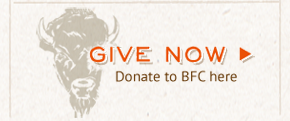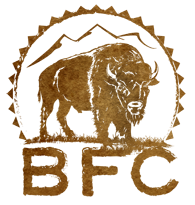Act by July 8, 2024 - Please Advocate for an environmentally preferable alternative
Yellowstone National Park has released its’ final environmental analysis for a plan on how buffalo will be managed for years to come. The release starts a 30-day “waiting period” after which Regional Director Kate Hammond will make a momentous decision on the future of our country’s last wild buffalo herds.

Will the recently born white buffalo calf, and the calf's mother get caught up in the Park’s management actions? A fair question.
Each of the Park’s three alternatives continue trapping, quarantine, slaughter, and harassing buffalo from habitat in government hazing operations. The Park’s “preferred alternative” is to accelerate trapping more buffalo for quarantine, and limiting the total population to 3,500 to 6,000 after calving (Alternative 2).
But the Park’s management selects against wildness, likely disturbed Yellowstone buffalo’s migratory patterns and population structure, and is conflict with National Park Service policies to maintain the “natural abundance, diversity, and genetic and ecological integrity” of native species “minimally influenced” by humans.
In repeatedly trapping buffalo from the Northern and Central herds and releasing the cohorts from captivity, the Park likely played a role in shifting migratory patterns, and “breaking down” genetically distinct subpopulations. Conducting over 600 government hazing operations – from 2009 to 2021 alone – against Yellowstone’s buffalo herds on their range and habitat likely played a role too.
The genetic erosion of distinct herds that occurred under Park management may cause an overall loss in genetic variation–the differences allowing Yellowstone buffalo to adapt to and survive future changes in the ecosystem.
Yellowstone National Park must heed the wisdom of the late wildlife biologist James Bailey PhD who warned government management is weakening natural selection of the “irreplaceable wildness of Yellowstone bison.”
What you can do. Contact Kate Hammond and Cam Sholly before July 8.
Kate Hammond, Regional Director
National Park Service
12795 West Alameda Parkway
Denver, CO 80225
(303) 969-2500
This email address is being protected from spambots. You need JavaScript enabled to view it.
Cam Sholly, Superintendent
Yellowstone National Park Attn: Bison Management Plan
PO Box 168
Yellowstone National Park, WY 82190
(307) 344-2002
This email address is being protected from spambots. You need JavaScript enabled to view it.
Urge the Regional Director and Superintendent to create an “environmentally preferable alternative,” that causes the least damage to, and best protects wild buffalo and the Yellowstone ecosystem by:
-
Managing wild buffalo like wild elk. Cease costly and wasteful government management actions.
- Getting Yellowstone National Park out of the business of harassing, trapping, domesticating, and slaughtering wild buffalo, which suppresses the herds, and impedes migration to National Forest habitat.
- Safeguarding genetic diversity by conserving at least 2,000 to 3,000 adult buffalo in each herd. More must be done for the Central herd whose numbers have been perilously low since 2008.
-
Independently studying genetic variation and herd integrity, and how “management” factored in changing Yellowstone’s population structure from “genetically distinct bison subpopulations” to “one interbreeding population.”
- Implementing projects with the Custer Gallatin National Forest and American Indian Tribes to restore connectivity to habitat, and respecting buffalo’s freedom to roam National public trust lands.
- Building infrastructure for wildlife safe passages.
Learn more on our web page:







